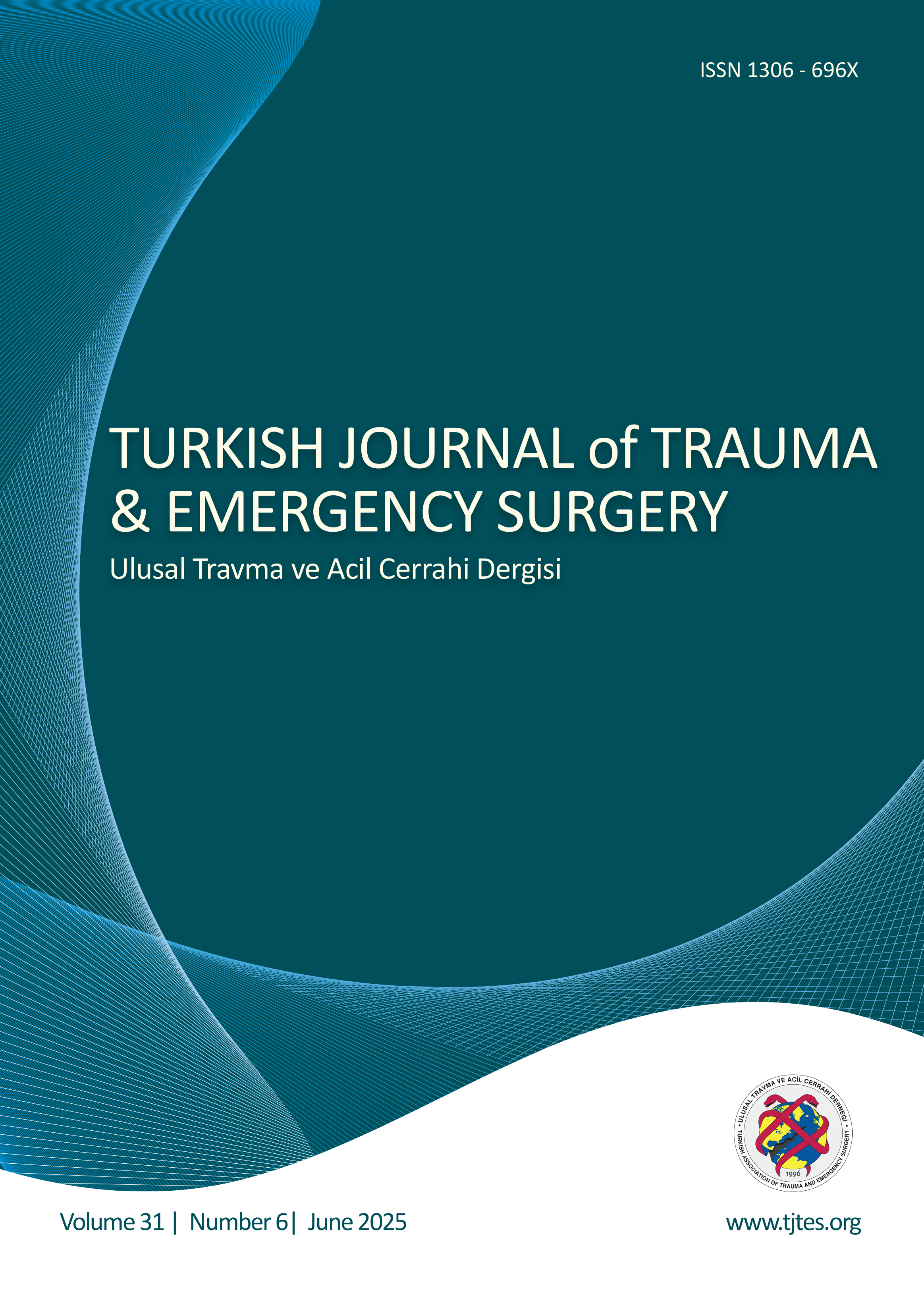Quick Search
Epidemiological characteristics of electrical injuries of patients applied to the emergency department
Behçet Al1, Mustafa Aldemir1, Cahfer Güloğlu1, İsmail Hamdi Kara2, Sadullah Girgin31Departments Of Emergency Medicine Faculty Of Dicle University, Diyarbakır, Turkey2Departments Of Family Medicine Faculty Of Dicle University, Diyarbakır, Turkey
3Departments Of General Surgery, Medicine Faculty Of Dicle University, Diyarbakır, Turkey
BACKGROUND: In this study, we planned to determine the factors affecting the mortality, and morbidity of electrical injuries.
METHODS: Medical records of 165 patients (126 males; 39 females; mean age 21.1 years; range 2.5 to 62 years), who were admitted to the Emergency Department of Dicle University School of Medicine for electrical injuries, between January 2003 and April 2004, were retrospectively reviewed.
RESULTS: Among these patients, 60 (36.4%) were children, under 12 years old; 95 (57.6%) were adolescents and adults, and 10 (6%) were aged. Of the victims of electrical accidents, 29 (17.6%) were illiterate and 36 (21.8 %) were educated. Ninety-seven (58.8 %) patients were either graduates or still students of elementary, secondary or high school. The cause of exposure to electricity was accident in 99 (60%), and carelessness and parents' negligence in 66 (40%). Sixty-nine (41.8%) patients were exposed to high voltage, and 96 (58.2 %) to low voltage. Because of electrical injury 16 patients had first degree, 96 patients had second degree, and 86 patients had third degree burns. The most frequent complications were contractures of extremities (10.9%) and compartment syndrome (3.6%). Mortality rate was 9.1% (n=15). Eighty percent of the deaths were due to exposure to high voltage. A positive correlation was demonstrated between mortality and complications (p<0.001). Escarotomy was performed in 10 patients, fasciotomy in 16, and amputation in 9. Two of 5 patients who had intraabdominal hemorrhage underwent surgery.
CONCLUSION: A serious education of the society with respect to conscious use of of electricity is the most efficient method to decrease electrical accidents.
Elektrik çarpması sonucu acil servise başvuran hastaların epidemiyolojik özellikleri
Behçet Al1, Mustafa Aldemir1, Cahfer Güloğlu1, İsmail Hamdi Kara2, Sadullah Girgin31Dicle Üniversitesi Tıp Fakültesi, İlk Ve Acil Yardım Anabilim Dalı, Diyarbakır, Türkiye2Dicle Üniversitesi Tıp Fakültesi, Aile Hekimliği Anabilim Dalı, Diyarbakır, Türkiye
3Dicle Üniversitesi Tıp Fakültesi, Genel Cerrahi Anabilim Dalı, Diyarbakır, Türkiye
AMAÇ: Bu çalışma, elektrik çarpmalarının epidemiyolojik özelliklerini belirlemek, mortalite ve morbiditeye etkili olan faktörleri saptamak için planlandı.
GEREÇ-YÖNTEM: Dicle Üniversitesi Tıp Fakültesi Acil Kliniğine Ocak 2003-Nisan 2004 tarihleri arasında elektrik çarpması şikayetiyle başvuran 165 hasta (126 erkek; 39 kadın; ort. yaş 21.1; dağılım 2.5-62) yaş, cinsiyet, elektik kaynağı ve gücü, yanık derecesi ve yüzdesi, oluşan komplikasyonlar, yapılan müdahaleler, eğitim durumu ve meslekleri bakımından değerlendirildi.
BULGULAR: Hastaların, 60ı (%36.4) 12 yaşın altında, 95i (%57.6) genç ve erişkin yaşta ve 10u (%6) ileri yaşta idi. Yirmi dokuz (%17.6) hasta okuryazar değil, 36sı (%21.8) okuryazar ve 97si (%58,8) halen eğitim görmekte idi. Yanıkların 99u (%60) kaza, 66sı (%40) ise dikkatsizlik ve ihmal sonucu oluşmuştu. Hastaların 69u (%41.8) yüksek, 96sı (%58.2) düşük voltaja maruz kalmıştı. On altı hastada birinci derece, 96 hastada ikinci derece ve 86 hastada üçüncü derece yanık meydana gelmişti. En sık görülen komplikasyonlar, ekstremitelerde kontraktür (%10.9) ve kompartman sendromu (%3.6) idi. Hastaların 10una eskarotomi, 16sına fasyotomi, 9una amputasyon uygulanmıştı. Mortalite oranı %9.1 (n=15) idi ve bu olguların %80i yüksek elektrik voltajına maruz kalmıştı. Gözlenen komplikasyonlar ile mortalite arasında pozitif bir korelasyon saptandı (p<0.001).
SONUÇ: Elektrik sistemlerinin doğru kullanımı ile ilgili toplumsal eğitimin verilmesi, ev içi ve ev dışı elektrik hatlarının gizli döşenmesi gibi basit önlemlerin alınması ile kazalar en aza indirilebilecektir.
Manuscript Language: Turkish



